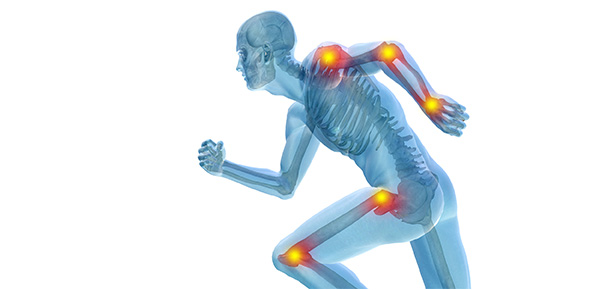Related Flashcards
Related Topics
Cards In This Set
| Front | Back |
|
What are the three types of muscular tissue?
|
Skeletal, Cardiac, and Smooth
|
|
How are the 3 muscle tissues different from one another?
|
Differ in microscopic anatomy, location, and how they are controlled by nervous and endocrine systems.
|
|
What is skeletal tissue's function?
|
Its purpose is to move bones of the skeleton.
|
|
Describe skeletal tissue.
|
It is striated with alternating light and dark bands (striations), that can be seen under the microscope.
|
|
Describe how skeletal muscle works.
|
It is voluntary, consciously controlled by neuron (nerve cells) that are part of the somatic (voluntary) division of the nervous system.
|
|
Where is cardiac muscle located?
|
Only in the heart, forms most of the heart wall.
|
|
Describe cardiac muscle and how it works.
|
Striated, and its action in involuntary. The alternating contraction and relaxation are initiated by internal pacemaker.
|
|
Where is smooth muscle located?
|
In the walls of hollow internal structures, such as blood vessels, airways, organs in abdominopelvic region, and skin attached to hair follicles
|
|
Describe smooth muscle and how it works.
|
Nonstriated (smooth), usually involuntary, both cardiac and smooth muscle are part of autonomic (involuntary) div. of nervous system
|
|
What are the four key functions of muscular tissue?
|
Producing mvmnts, stabalizing body positions, storing and moving substances w/in the body, generating heat.
|
|
Producing Movements
|
Movements of the whole body as a result in muscle contractions, rely on integrated functioning of skeletal muscles, bones and joints
|
|
Stabilizing body positions
|
Skeletal muscle contractions stabalize joints and help maintain body positions. Postural muscles contract continuously.
|
|
Storing and moving substances within the body
|
Accomplished and sustained contractions of ring- like bands of smooth muscles called sphincters, which prevent outflow
|
|
Generating heat
|
As muscular tissue contracts, it produces heat, the process is known as thermogenesis. Much of that heat is used to maintain normal body temp.
|
|
What are the four special properties that enable muscular tissue to function and contribute to homeostasis?
|
Electrical excitability, Contactility, Extensibility, Elasticity
|







